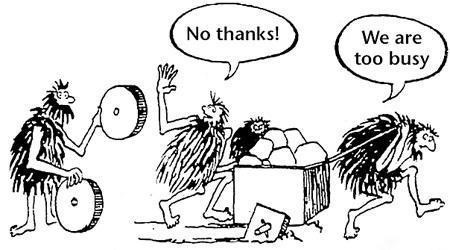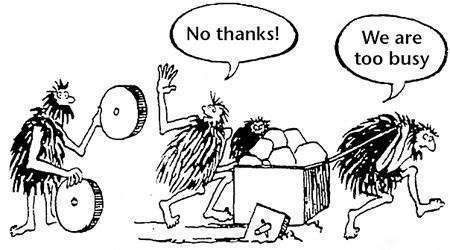
An unfortunate reality in business is that organizational change meets resistance—even if the change will almost certainly result in positive benefits. People get stuck in their ways, and so do organizations. When changes need to be made, it’s usually not as easy as you might think it should be.
But accepting a less-than-optimal status quo simply to avoid the challenges of change isn’t an acceptable alternative for companies focussed on long-term success. They understand that the short-term pain will be worth it.
But how can you lessen that pain?
In helping our clients adopt The Checker Software to improve the efficiency and effectiveness of their auditing and inspecting processes, we’ve seen what works in overcoming the inevitable resistance to meaningful organizational change.
Here are four steps that we advise all our clients (or any organization undertaking change) to take:
1. Make sure management buys into the change.
If your organization has decided to implement a performance-enhancing change such as The Checker Software , you’ll need a unified front by management at all levels in support of the change—not just one or a few “champions.”
Before implementing our software (or making any other significant change), meet with all your management personnel first.
Ask for their input if you’re still deciding on whether to use the software. If you already have made the decision, explain why you made it and then ask for their input in how to best implement it. Managers can be more resistant to anyone to organizational change, so an important goal is to win over any who are resistant. Providing detailed explanations of the benefits, seeking input, and responding respectively to that feedback (even if it’s off-base) is a proven way to get reluctant managers to buy into a change.
It’s simple human nature: if they feel their opinion and experience is given no weight, they’re going to be more prone to focus on the challenges of the change than on the positive results it will bring.
Providing explanations and including all managers in the decision-making process (as much as possible) will also provide them the knowledge to explain the benefits, as well as the challenges, to their supervisees as the change moves forward.
2. Meet with the entire organization when introducing the change.
After you have managers on board, it’s time to seek buy-in from everybody.
When undertaking a change such as beginning to use our powerful audit/inspection software, the change has significantly less chance of being a smooth transition if the people who will actually be making the change aren’t happy or clear about it. Non-management personnel are no different than managers—they want to feel as if they are helping direct the change, at least to an extent. Most will appreciate a chance to share their input, even though the decision has already been made.
Call a meeting of the entire organization to give all personnel that opportunity. If your organization’s size or structure makes a meeting of the whole organization impractical or unnecessary, at least include everyone who will be affected in any way by the change.
Don’t treat this meeting as a “one-off” event. Make it clear that you welcome ongoing feedback, and be sure to follow up on any recommendations or concerns, whether they’re made at the meeting or at any other point in the change process. You may very well receive feedback that will prove extremely valuable. Often, the personnel who are on the “front lines” will have insights that others couldn’t possibly have.
3. Leave no doubt that there is a “no-exception” policy once the change is made.
The meeting with all personnel is also the time to unequivocally state that lack of compliance with the change won’t be tolerated. So, in the case of our software, our clients have to be firm in insisting that, at a clearly defined point in the change process, all personnel will have to use the software. No exceptions, even if they’d prefer to continue using paper or some other system.
To lessen any anxiety, explain exactly how you’ll train them to be ready and what support they’ll receive, but make it clear that they must be ready by a certain time.
No matter what the change, if it’s a significant one, you’re probably going to hear about how it’s not ideal from some folks. They may complain that the change is making them less efficient. They may hope that if they resist the change, things will go back to the way they were.
In making a positive change, returning to the status quo is exactly what you don’t want to happen, so be firm and don’t give them the option to delay or hinder the change. (That said, the goal is always to eventually get them to go along willingly, so keep working on educating and training to get their genuine buy-in.)
4. Have a systematic plan in place to maintain the change, provide ongoing training, and make any necessary adjustments to make the most of the change.
Even once a change is in place, the challenge of change isn’t over. Before organizations even make the change to our software, we recommend that they establish a well-defined, systematic plan for:
- monitoring compliance with the change
- enforcing compliance
- training and re-training of personnel
- evaluating the efficiency and effectiveness of the change
- making any necessary adjustments to fine-tune processes.
A plan with these elements will keep the organization on track with their use of the software.
Takeaway
When an organization decides to begin using The Checker Software, we recommend four key steps, which we believe apply to any major change within an organization:
- Make sure management buys into the change.
- Meet with the entire organization when introducing the change.
- Leave no doubt that there is a “no-exception” policy once the change is made.
- Have a system in place to maintain the change, provide ongoing training, and make any necessary adjustments to make the most of the change.




